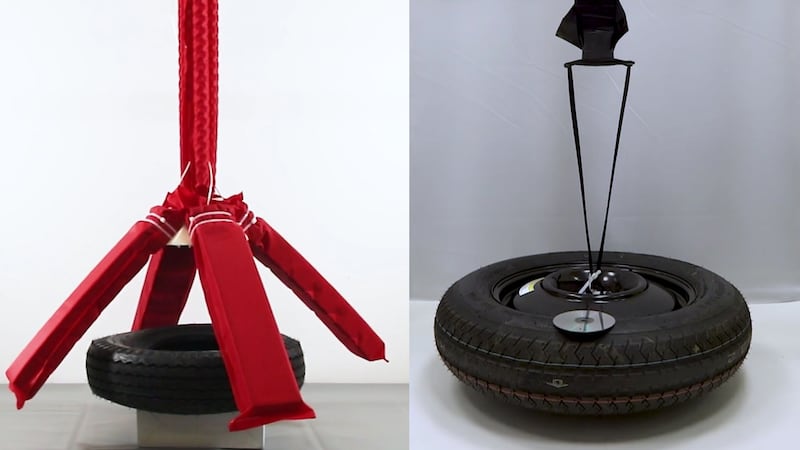Super-flexible robotic arms that can lift objects up to 1,000 times their own weight have been developed by scientists.
The “artificial muscles”, which were inspired by the Japanese art of origami, are made up of an inner “skeleton” surrounded by air or fluid and sealed inside a plastic or textile bag that serves as the “skin”.
The researchers from the Wyss Institute at Harvard University and MIT’s Computer Science and Artificial Intelligence Laboratory (CSAIL), who built the device, say the muscle’s movement is determined entirely by the shape and composition of the skeleton – without any other power source or human input.
The process works by sucking air out of the bag to initiate muscle movement “causing the skin to collapse onto the skeleton, creating tension that drives the motion”.
Dr Daniela Rus, of CSAIL, said: “We were very surprised by how strong the actuators (aka muscles) were.
“We expected they’d have a higher maximum functional weight than ordinary soft robots, but we didn’t expect a thousand-fold increase.
“It’s like giving these robots superpowers.”
New research from the Wyss Institute: origami-inspired muscles are both soft and strong, and can be made for less than $1. https://t.co/KBQdzATLL6 #robotics pic.twitter.com/NCkAaNdfc5
— Wyss Institute (@wyssinstitute) November 27, 2017
The team designed numerous artificial muscles using different types of materials – from metal springs to packing foam to sheets of plastic.
They also experimented with different skeleton shapes to create muscles that can contract down to 10% of their original size, twist into a coil and lift a delicate flower without damaging it.
According to the researchers, these muscles are scalable, with sizes ranging from a few millimetres up to a metre, and can be made in under 10 minutes for less than one US dollar (75p).
The team also designed a more eco-friendly version made using a water-soluble polymer (plastic that dissolves in water).
BREAKING: MIT & Harvard's artificial muscles can lift 1000x their weight and are made of materials you'd find in your mattress: https://t.co/grAVdemJSM pic.twitter.com/TwgPs4haIM
— CSAIL at MIT (@MIT_CSAIL) November 27, 2017
One of their designs – a 2.6 gram muscle – was able to lift a three kilogram object, which the researchers describe as “the equivalent of a mallard duck lifting a car”.
The team said that being powered by vacuum makes their products safer than other artificial muscles currently being tested.
Daniel Vogt, of the Wyss Institute, said: “Vacuum-based muscles have a lower risk of rupture, failure, and damage, and they don’t expand when they’re operating, so you can integrate them into closer-fitting robots on the human body.”
The study is set to be published in the Proceedings of the National Academy of Sciences.








